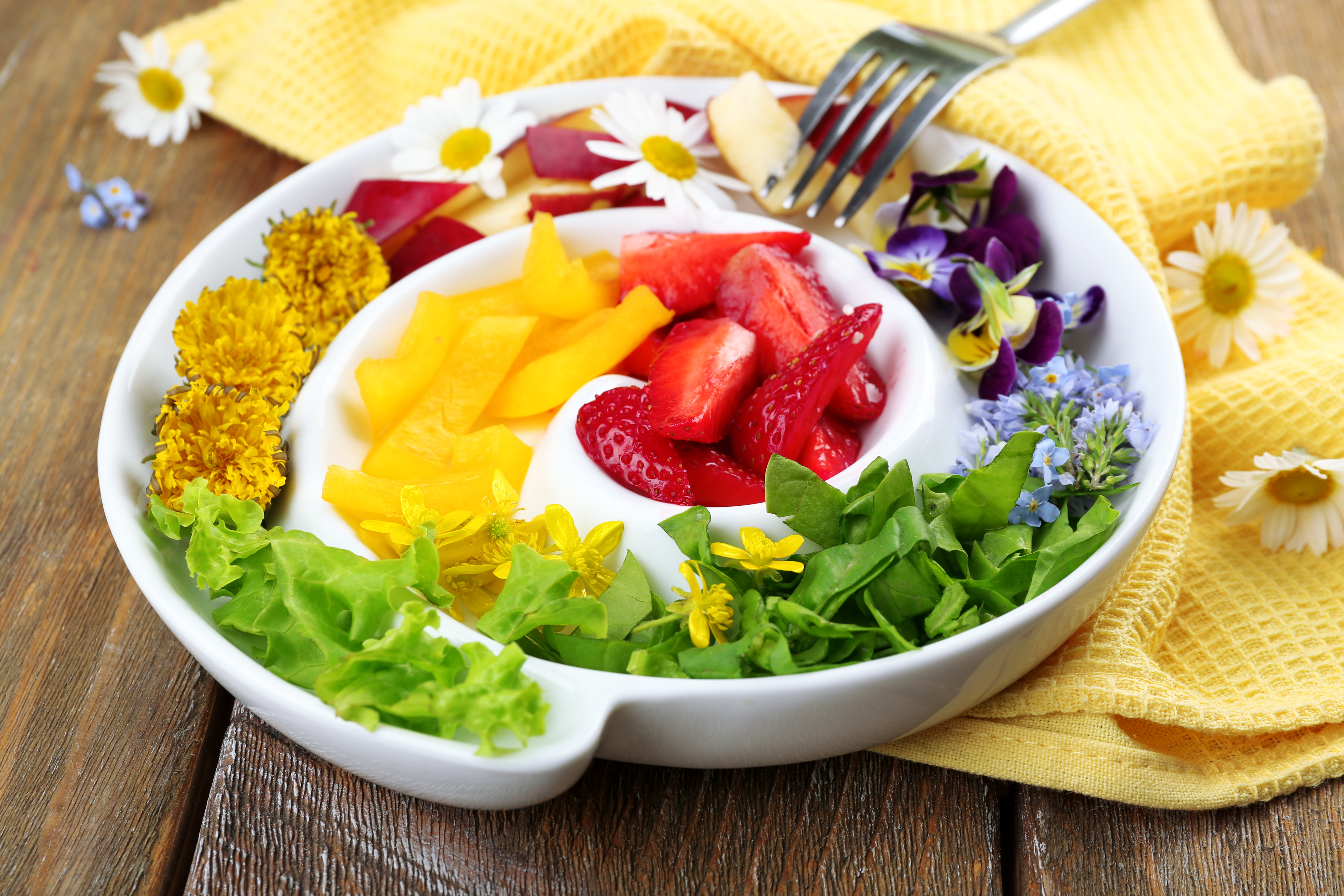Mom says “Eat your fruits and veggies” and you’ll get big and strong. Doctors tell you that eating plenty of vegetables and fruits can help you reduce the risk of heart disease, control blood pressure, and may even help prevent some types of cancer. Magazines, TV, and radio remind us that eating produce is essential for a healthy diet. Even the USDA’s latest dietary guidelines call for five to thirteen servings of fruits and vegetables a day.
It’s Easier Than You Think
Farmers markets have grown by leaps and bounds in the last few years and organic produce can be found in nearly every region of the county. Organic produce sales continue to grow every year. So why do the latest statistics on fruit and vegetable consumption show that the average American eats a total of just three servings of fruits and vegetables a day? It could be that many folks feel preparing fruit or vegetables is too hard or time-consuming. Or it could be that we think that five to thirteen servings of fruits and vegetables a day is a lot to consume. Well, perhaps if we look at it differently it might make eating the produce we need a little easier.

The recommended serving breaks down to about 2½ to 6½ cups per day. For a person who needs 2,000 calories a day to maintain a healthy weight and diet, this breaks down to only nine servings, or 4½ cups per day (2 cups of fruit and 2½ cups of vegetables). If you go and look at a cup measure you’ll see that a cup is very little in actual quantity and eating your daily amount won’t seem so daunting. Another way to look at it is to break it down into how many organic carrots or grapes you need to eat to make a serving.
Typical Serving Sizes for Fruits and Vegetables
Fruits
One banana
Six strawberries
Two plums
Fifteen grapes
One apple
One peach
1/2 cup of orange or other fruit juice
Vegetables
Five broccoli florets
Ten baby carrots
One Roma tomato
3/4-cup tomato juice
3/4-cup vegetable juice
Half of a baked sweet potato
One ear of corn
Four slices of an onion

When you look at it this way, if you had a banana and cup of OJ with your cereal, a handful of grapes for a morning snack, some sliced organic tomato and onion, and a leaf of lettuce on your turkey and cheese sandwich, an apple or kiwi for afternoon snack and five broccoli florets and ten baby carrots when you are munching at the appetizer table, you would have eaten what you need for the day. If you make a basic dinner salad with a couple of cups of romaine lettuce, 5 or 6 slices of cucumber and 3 or 4 rings of red pepper, you’ve got your veggies covered for the day.
Heck a vegetable omelet with ½ cup of sliced organic mushrooms, ½ cup of green pepper, ½ cup of chopped onions could make up almost ½ of your days needs. It doesn’t seem so monumental this way, does it?
Of course, it would be great if we would eat more than the daily recommendation but if you are eating little or none this is a good place to start. And once you get started you’ll see that organic produce can be a pretty nice addition to just about any meal or snack routine.
Make it Easy to Eat Your Fruits and Veggies
Ask your produce person to sample what’s fresh and in season. After all, that is usually when produce is at its best flavor and best price.
Keep fruit out where you can see it. That way you’ll be more likely to eat it. Keep it out on the counter or in the front of the fridge. When I’m home I place 5 or 6 pieces of fruit on the counter I will walk by the most during the day and guess what? I do eat more fruit this way.
Have some already cut up. If your carrots are ready to eat you and your orange is already quartered you will be more apt to choose them for a healthy lunch companion or snack.
Every meal, every day. Try filling half your plate with vegetables or fruit at each meal. It may seem odd at first but eating big salads with lots of veggies, or a stir-fry or a fruit salad makes it easier to eat your fruits and veggies servings every day.
Check out our easy ideas for a quick and healthy lunch here.
Get to know your produce manager. It’s easy to stick with the same old thing each time you shop but that makes meals less inspiring. It is said that variety is the key to a healthy diet. Ask your produce manager to help you choose some new fruits and vegetables from the seasonal lineup of great produce.
Make a cooking night for yourself. If you are making dinner anyway cook up some extra sweet potatoes, they are wonderful cold or warmed-up for lunch. Make a batch of coleslaw or a few days worth of carrots ready to go in a Tupperware. If you are feeling adventurous make a big pot of soup with lots of your favorite vegetables to get you through the week.
Set a good example. If you do it you’ll soon see others around you following suit. After all, we all like things to be easy. The easier you make it on yourself to eat your fruits and veggies, the more likely you will.
Originally posted 2018-07-27 09:52:01.







